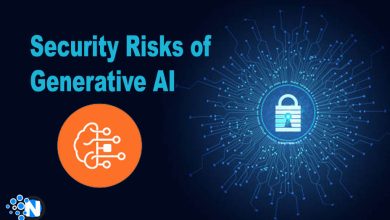Cybersecurity Technologies Where AI Proves Valuable

As businesses are adopting online platforms to survive in this highly competitive landscape, they become vulnerable to attacks. Cybercriminals are using the latest techniques to carry out their activities. Thus, they have forced organizations to seek stronger defenses. In all such scenarios, artificial intelligence is emerging as one of the strongest solutions against digital threats.
AI revolutionizes cybersecurity by offering unparalleled detection and analysis. It responds to attacks in an incredibly efficient way to protect sensitive data and vital systems.
This article explores some AI-powered cybersecurity technologies and how they are reshaping security aspects to prove their valuability.
<strong>AI in Cybersecurity – An Overview</strong>
AI in cybersecurity uses machine learning to find and stop threats. It offers key benefits which I have mentioned below.
- Automation: It automates tasks and allows teams to tackle complex issues. For example, AI monitors unusual activities 24/7 without proving heavy on your resources.
- Threat Detection: AI improves threat detection. It analyzes data to find patterns that can potentially be missed by humans while following traditional methods. Hence, you can learn about critical threats and follow the right strategies to overcome them.
- Attack Prediction: Lastly, AI helps predict attacks. It analyzes past data to inform you about upcoming threats allowing for proactive measures. This strengthens security.
<strong>How AI is Playing Its Role in Cybersecurity?</strong>
In the undersection, I have enlisted some points that will highlight the role of AI in cybersecurity technologies.
1. Security Information and Event Management
SIEM systems are crucial for organizations. They monitor and respond to security incidents in real time. These systems gather and analyze log data from network devices, servers, and apps. This gives a full view of an organization’s security.
An AI-powered SIEM solution will enhance threat detection and reduce incident response time in the following ways.
- Real-time analysis and machine learning let organizations quickly fix threats which reduces potential damage.
- AI-driven SIEM systems show improved response times and accuracy which demonstrates AI’s role in cybersecurity.
- Also, automation lets analysts focus on serious incidents that require human attention.
2. Threat Intelligence Platforms
Threat intelligence platforms gather data from various sources to gain insights into emerging threats. AI analyzes this data and identifies trends that may indicate future attacks. These platforms use threat feeds, security blogs, and dark web forums. They provide a complete view of the threat landscape. The role of artificial intelligence in this regard can be best elaborated by the following points.
- AI uses predictive analytics to help organizations foresee threats and adjust defenses. With this approach, they can fight against evolving cybercriminals.
- Additionally, AI-driven systems provide real-time reports and alerts to security teams. This enables quick responses to potential incidents.
Such capabilities boost security and improve team communication, promoting collaboration in managing threats.
3. Intrusion Detection and Prevention Systems
IDPS, short for Intrusion Detection and Prevention Systems, are vital as they can identify and react to unauthorized access. Typically, these systems use signature-based detection, which can miss new threats. AI improves them by analyzing behavior to spot attack patterns.
For example, machine learning algorithms can monitor network traffic. They detect deviations, like sudden spikes in outbound traffic or strange login attempts. This adaptive learning capability ensures that IDPS remains effective against evolving threats.
AI can improve its detection skills by learning from new data. This makes it more resilient to sophisticated attacks. Also, AI can prioritize alerts by threat severity. This lets security teams focus on the most critical incidents first.
4. Endpoint Protection
Endpoint security is vital as more people work remotely and devices link up. AI-powered Endpoint Detection and Response solutions enhance protection. They use advanced machine learning to spot and block malware.
These systems monitor endpoint behavior to detect anomalies that suggest threats. An EDR can identify malware by its behavior. This works even if you haven’t seen that specific variant before.
Using AI, organizations can quickly and effectively respond to endpoint threats. This is crucial now, as remote work is currently in trend. AI can also automate responses to lessen attack impact. For example, it can isolate infected devices or undo changes.
5. User and Entity Behavior Analytics
UEBA detects insider threats and hacked accounts by analyzing behavior. Traditional security often misses these threats, as they can appear normal. AI improves UEBA by establishing typical behaviors so that teams can find anomalies instantly.
For example, an AI UEBA system can mark a day worker’s odd logins or access sensitive data as suspicious. This is crucial for spotting internal threats, often missed by regular security methods. AI-driven UEBA solutions clarify user activities. They help organizations defend against insider threats.
6. Security Automation and Orchestration
Security automation and orchestration improve operations. They automate tasks and coordinate responses across tools. The high number of alerts from security systems can overwhelm teams. This leads to alert fatigue and missed threats. Here, AI is crucial. It enables automated playbooks that guide responses to incidents.
For example, if phishing is detected, an AI tool can isolate the email, notify the user, and start an investigation. This process doesn’t need human intervention. It reduces response times and errors. So, organizations can quickly fix security issues that will reduce the damage risks. Also, automation lets security teams grow without more staff. So, it’s a cost-effective choice.
<strong>Challenges and Considerations</strong>
AI enhances cybersecurity but also possesses some challenges. It can mistakenly mark safe actions as threats. Moreover, it requires top-notch and accurate data for training. Some key challenges are:
- Poor Training Data: Bad data leads to poor detection and wrong responses. Consequently, it can bring more damage than benefit.
- Ethical Issues: Ethical issues include privacy and bias in AI based on poor quality data.
Organizations need human oversight to use AI responsibly. Regular audits can determine biases and improve reliability. Also, you need to be transparent about AI use in cybersecurity to avoid unwanted outcomes.
<strong>Future Trends in AI and Cybersecurity</strong>
Organizations stand to gain from smarter, more automated security measures. As AI evolves, it will reshape how we protect data and systems. The cybersecurity landscape is expected to see a dramatic transformation, driven by the cutting-edge technologies, mentioned in the following section.
- Quantum leaps in AI promise to revolutionize cybersecurity.
- Advanced threat hunting and predictive analytics will further enhance the defenses.
- Encryption methods have experienced enormous evolutions as quantum computing emerges.
AI-driven innovations are reshaping cybersecurity and demanding a proactive measure against evolving threats. Organizations must invest in continuous training and equipping security teams with cutting-edge AI skills.
As threats change, industries and governments must unite. They must share intelligence and create best practices. This teamwork, alongside the help from AI, will improve defenses against a changing digital battlefield.
<strong>Conclusion</strong>
AI enhances cybersecurity technologies like SIEM systems and endpoint protection. It boosts efficiency and accuracy. So, organizations can better anticipate and respond to threats. As cyber threats evolve, it is becoming more and more crucial to adopt AI technologies.
These technologies strengthen cybersecurity strategies and protect vital assets. You must invest in artificial intelligence solutions to improve the security aspects of your company. As a result, you will be able to overcome advanced security threats.




